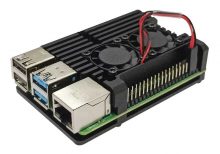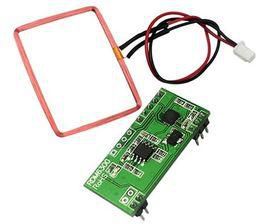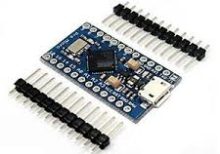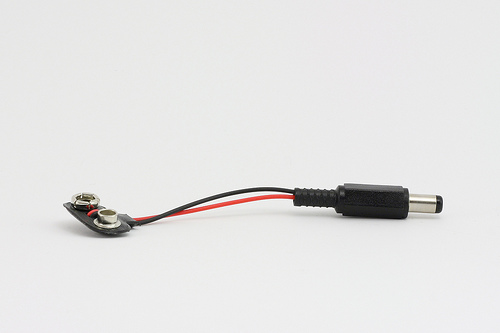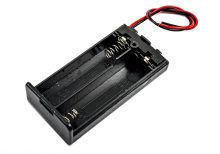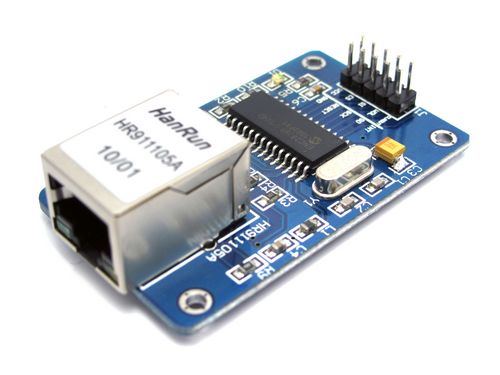|
Description |
The 9V Battery Connector is a convenient and reliable accessory used to connect 9V batteries to electronic circuits and devices. It features a pair of snap connectors that securely attach to the terminals of a 9V battery, providing an easy way to power various projects and components.
Key Features:
- Easy and secure connection to 9V batteries
- Color-coded wires for correct polarity
- Flexible and durable leads for reliable connections
- Compatible with various electronic projects and devices
- Lightweight and compact design
Technical Specifications:
- Connector Type: Snap-on for 9V battery
- Wire Length: Typically around 15cm (varies by manufacturer)
- Wire Gauge: 24 AWG (varies by manufacturer)
- Polarity: Red wire for positive (+), black wire for negative (-)
- Material: Plastic housing with metal contacts
- Rated Voltage: 9V
- Current Capacity: Up to 1A
Applications:
- Powering small electronic projects
- Battery-powered devices
- Portable electronics
- Prototyping and breadboarding
- DIY and hobby projects
Usage:
- Connection:
- Snap the connector onto the terminals of a 9V battery, ensuring correct polarity (red wire to positive, black wire to negative).
- Wiring:
- Connect the leads to your circuit or device, observing proper polarity.
- Use solder, connectors, or a breadboard to make secure connections.
- Powering Devices:
- Use the 9V battery and connector to power your electronic projects, ensuring the voltage and current requirements are compatible.
Caution:
- Ensure correct polarity to avoid damaging the battery or connected device.
- Handle the connector and wires carefully to prevent short circuits.
- Avoid excessive bending or pulling on the wires to maintain reliable connections.
|
This sleek aluminum case for Raspberry Pi 4 offers superior protection and cooling with its ultra-thin design and dual cooling fans. Constructed from reinforced aluminum, the case ensures effective heat dissipation while maintaining a lightweight and durable build. The open design provides unobstructed access to all ports and does not interfere with the Wi-Fi signal.
Key Features:
- Ultra-thin Design: Slim profile for minimal space usage
- Easy Installation: Simple to assemble with included hardware
- Fast Heat Dissipation: Designed with smooth and straight aluminum material for efficient cooling
- Port Access: All ports and slots perfectly align with Raspberry Pi 4 Computer Model B
- Open Case Design: No interference with Wi-Fi signals
- Reinforced Material: Lightweight, durable aluminum with optional CPU grease for enhanced heat dissipation
- Silicon Cooling Pad: 0.5mm thickness for direct contact with the shell body, replaceable with CPU grease for better cooling
Dual Fan Features:
- Noise Level: 18dB for quiet operation
- Power Consumption: Low power design for energy efficiency
- Cooling Performance: Dual fans for enhanced heat dissipation
- Quiet Operation: Designed to minimize fan noise
- Quality Control: Each fan tested for optimal performance
- Thermal Tape: Updated for effective heat conduction
Technical Specifications:
- Material: Reinforced aluminum
- Cooling Fans: Dual 5V DC fans
- Fan Dimensions: 30mm x 30mm x 7mm
- Fan Noise Level: 18dB
- Case Dimensions: 95 x 62 x 30 mm (L x W x H)
- Weight: 150g (approx.)
- Cooling Pad Thickness: 0.5mm
- Port Compatibility: Fully compatible with Raspberry Pi 4 Model B
Applications:
- Raspberry Pi 4 Model B
- High-performance computing projects
- Media centers and home automation systems
- Robotics and DIY electronics
Usage:
- Install the Raspberry Pi 4 into the case using the provided screws and standoffs.
- Connect the dual cooling fans to the GPIO pins on the Raspberry Pi 4.
- Ensure the cooling pad or CPU grease is applied correctly for optimal heat dissipation.
Caution:
- Raspberry Pi is not included.
- Avoid exposure to excessive moisture or dust.
- Ensure fans are connected properly to avoid overheating.
|
The RDM6300 is a 125KHz RFID (Radio Frequency Identification) reader module designed for reading RFID tags at a frequency of 125 kHz. It is commonly used in access control systems, inventory management, and various RFID-based applications. The module can read data from passive RFID tags and transmit the information to a microcontroller or computer for processing.
Key Features:
- Frequency: 125 kHz
- Communication Interface: Serial UART (Universal Asynchronous Receiver/Transmitter)
- Read Range: Typically up to 10 cm (depends on tag and environmental conditions)
- Power Supply: 5V DC
- Output Format: ASCII or hexadecimal, depending on configuration
- Compatibility: Works with standard 125 kHz RFID tags
Technical Specifications:
- Operating Frequency: 125 kHz
- Power Supply: 5V DC
- Current Consumption: Typically around 50 mA
- Communication Interface: UART serial interface
- Read Range: Up to 10 cm (varies with tag type and antenna)
- Data Format: ASCII or hexadecimal output
- Antenna: Integrated or external depending on the module variant
Applications:
- Access Control: Used in systems for granting or restricting access based on RFID tag identification.
- Inventory Management: Helps in tracking and managing inventory with RFID tags.
- Identification Systems: Implemented in systems for identifying individuals or objects.
- Library Systems: Utilized in libraries for tracking books and managing checkouts.
Datasheet:
For detailed technical information, refer to the RDM6300 RFID Module Datasheet, which provides comprehensive details on specifications, pin configuration, and operation.
|
- The Arduino UNO R3 SMD is a popular and versatile microcontroller board based on the ATmega328P microcontroller. The SMD (Surface-Mount Device) version features the ATmega328P microcontroller in an SMD package, offering the same functionality as the traditional UNO R3 but with a more compact design. It is widely used for a variety of projects, from simple experiments to complex prototypes.
Key Features:
- Microcontroller: ATmega328P in SMD package
- Operating Voltage: 5V
- Input Voltage (recommended): 7-12V
- Digital I/O Pins: 14 (of which 6 provide PWM output)
- Analog Input Pins: 6
- Flash Memory: 32 KB (ATmega328P) of which 0.5 KB used by bootloader
- SRAM: 2 KB (ATmega328P)
- EEPROM: 1 KB (ATmega328P)
- Clock Speed: 16 MHz
- USB Connection: Standard USB-B for programming and communication
- Power Jack: 2.1mm center-positive barrel jack
- ICSP Header: For in-circuit programming
- Reset Button: For easy reset of the microcontroller
Technical Specifications:
- Microcontroller: ATmega328P
- Operating Voltage: 5V
- Input Voltage (limits): 6-20V
- Digital I/O Pins: 14 (6 PWM)
- PWM Digital I/O Pins: 6
- Analog Input Pins: 6
- DC Current per I/O Pin: 20 mA
- DC Current for 3.3V Pin: 50 mA
- Flash Memory: 32 KB (ATmega328P) of which 0.5 KB used by bootloader
- SRAM: 2 KB (ATmega328P)
- EEPROM: 1 KB (ATmega328P)
- Clock Speed: 16 MHz
- Length: 68.6 mm
- Width: 53.4 mm
- Weight: 25 g
Applications:
- Educational Projects: Ideal for beginners and students learning electronics and programming.
- Prototyping: Widely used for developing and testing new electronic devices and systems.
- Robotics: Can be used as a controller for various robotics projects.
- Home Automation: Suitable for creating smart home devices and automation systems.
- DIY Projects: Perfect for hobbyists and makers building custom gadgets and interactive installations.
Datasheet:
For detailed technical specifications, refer to the Arduino UNO R3 SMD Datasheet.
|
The Arduino Pro Mini is a compact, versatile microcontroller board based on the ATmega328P. Designed for advanced users who require a small form factor and flexibility, it is ideal for embedded systems, wearable projects, and space-constrained applications. The Pro Mini provides all the functionality of the Arduino Uno with reduced size and power consumption.
Key Features:
- ATmega328P microcontroller
- Compact and lightweight design
- 14 digital I/O pins (6 can be used as PWM outputs)
- 8 analog input pins
- On-board reset button
- Operating voltage: 5V
- Clock speed: 16 MHz
- Low power consumption
Technical Specifications:
- Microcontroller: ATmega328P
- Operating Voltage: 5V
- Input Voltage: 5-12V
- Digital I/O Pins: 14 (of which 6 provide PWM output)
- Analog Input Pins: 8
- DC Current per I/O Pin: 40 mA
- Flash Memory: 32 KB (of which 2 KB used by bootloader)
- SRAM: 2 KB
- EEPROM: 1 KB
- Clock Speed: 16 MHz
- Dimensions: 18mm x 33mm
Applications:
- Embedded systems
- Wearable technology
- Robotics
- DIY electronics projects
- Prototyping and development
- Educational tools
Usage:
- Connect the Arduino Pro Mini to a USB-to-serial adapter for programming.
- Install the Arduino IDE and configure it for the Pro Mini.
- Write, compile, and upload your code to the Pro Mini.
- Integrate the Pro Mini into your project, connecting sensors, actuators, and other peripherals as needed.
- Power the Pro Mini using an external power source within the specified voltage range.
Caution:
- Ensure correct voltage levels to prevent damage to the board.
- Handle with care to avoid static discharge.
- Verify all connections and components before powering the board.
Datasheet:
For detailed technical specifications, refer to the Arduino Pro Mini Datasheet.
|
The 125KHZ RFID Card is a contactless proximity card used for various identification and access control applications. It operates at a frequency of 125kHz and contains a unique identification number (UID) for each card. This card is durable and convenient, making it ideal for use in security systems, time and attendance tracking, and membership management.
Key Features:
- Operates at 125kHz frequency
- Durable PVC material
- Compatible with standard 125kHz RFID readers
- Unique identification number (UID) for each card
- Waterproof and tamper-resistant
- Long read range (up to 10 cm depending on the reader)
- No battery required (passive RFID technology)
Technical Specifications:
- Operating Frequency: 125kHz
- Material: PVC plastic
- Dimensions: 85.6mm x 54mm x 0.8mm (standard credit card size)
- Weight: Approximately 6g
- Read Range: Up to 10 cm (depending on the reader and environment)
- Data Storage: 64-bit read-only unique identifier (UID)
- Operating Temperature Range: -25°C to +85°C
- Color: Typically white, but may vary by manufacturer
- Waterproof: Yes
Applications:
- Access control systems
- Time and attendance tracking
- Membership management
- Asset tracking
- Secure entry systems
- Contactless payment systems
Usage:
- Integration:
- Enroll the RFID card in the desired RFID system by registering its unique identifier (UID) with the system’s database.
- Operation:
- Present the card to an RFID reader within the read range (up to 10 cm).
- The reader will capture the UID and communicate it to the control system for processing.
- Security:
- Use the card for secure access to restricted areas or for tracking attendance.
- Pair the card with a compatible RFID reader and control system for seamless operation.
Caution:
- Avoid exposing the card to extreme temperatures or harsh chemicals.
- Do not bend or apply excessive force to the card to prevent damage.
- Keep the card away from strong magnetic fields to ensure proper operation.
Datasheet:
For detailed technical specifications, refer to the manufacturer’s datasheet for your specific 125kHz RFID card model.
|
The Raspberry Pi Zero WH is a compact, low-cost single-board computer with built-in wireless connectivity and pre-soldered GPIO header. It is an upgraded version of the Raspberry Pi Zero W, offering the same performance with the convenience of having the GPIO header already attached, making it ideal for various DIY projects, embedded systems, and educational purposes.
Key Features:
- Wireless Connectivity: Built-in Wi-Fi (802.11n) and Bluetooth 4.2 for wireless communication
- Pre-Soldered GPIO Header: 40-pin GPIO header pre-soldered for easy integration with accessories
- Compact Size: Small form factor, making it suitable for space-constrained applications
- Low Power Consumption: Efficient power usage for battery-operated and low-power devices
- High Performance: Capable of handling basic computing tasks and various applications
Technical Specifications:
- Dimensions:
- Length: 65 mm
- Width: 30 mm
- Height: 5 mm (excluding connectors)
- Weight: Approximately 9 g
- Processor: Broadcom BCM2835 ARM1176JZF-S single-core CPU
- Clock Speed: 1 GHz
- RAM: 512 MB LPDDR2 SDRAM
- Storage: microSD card slot for storage
- Connectivity:
- Wireless: 802.11n Wi-Fi and Bluetooth 4.2
- USB: One USB On-The-Go (OTG) port
- Video Output: Mini HDMI port (supports up to 1080p60)
- Audio: 3.5mm audio jack (composite video and audio)
- GPIO: 40-pin GPIO header (pre-soldered)
- Power Supply: 5V DC via micro USB
- Operating Temperature: 0°C to +50°C
Applications:
- Educational Projects: Ideal for learning programming, electronics, and computing.
- DIY Projects: Suitable for custom electronics projects, home automation, and robotics.
- Embedded Systems: Can be used in embedded applications requiring compact computing power.
- Media Centers: Can be configured as a lightweight media center or streaming device.
- IoT Devices: Suitable for Internet of Things (IoT) applications requiring wireless connectivity.
Datasheet:
For detailed technical information, refer to the Raspberry Pi Zero WH Datasheet.
|
The Arduino Pro Micro is a compact and versatile microcontroller board based on the ATmega32U4 microchip. It is part of the Arduino family and designed for projects where space is limited. The Pro Micro board features built-in USB capabilities, allowing it to emulate a keyboard, mouse, or other USB devices, making it suitable for a wide range of applications including custom input devices and embedded systems.
Key Features:
- Microcontroller: ATmega32U4
- Operating Voltage: 5V
- Input Voltage (recommended): 7-12V
- Digital I/O Pins: 18
- Analog Input Pins: 9
- Flash Memory: 32 KB (ATmega32U4), of which 4 KB used by bootloader
- SRAM: 2.5 KB
- EEPROM: 1 KB
- Clock Speed: 16 MHz
- USB: Built-in USB functionality for direct connection to computers and emulation of USB devices
Technical Specifications:
- Dimensions: 33 mm x 18 mm
- Weight: Approximately 8 g
- Communication: UART, SPI, I2C, USB
- On-board LEDs: TX, RX, Power, and one user-defined LED
- Power:
- DC Current per I/O Pin: 40 mA
- DC Current for 3.3V Pin: 50 mA
- Connectors:
- USB Micro-B for programming and power
- 6-pin header for serial communication
- Pins for additional communication interfaces and power
Applications:
- Custom Input Devices: Can be used to create custom keyboards, mice, and other input devices.
- Embedded Systems: Suitable for small-scale embedded projects where USB connectivity is required.
- Prototyping: Ideal for rapid prototyping and development due to its compact size and USB capability.
- IoT Projects: Can be integrated into Internet of Things (IoT) devices for various control and monitoring applications.
- Wearables: Perfect for wearable electronics and projects requiring a small form factor.
Datasheet:
For detailed technical information, refer to the Arduino Pro Micro Datasheet.
|
RF (Radio Frequency) Transmitters and Receivers are essential components for wireless communication systems. They are used to transmit and receive radio signals over a distance, making them ideal for remote control, data transmission, and wireless sensor networks. These modules are compact, efficient, and easy to integrate into various electronic projects, providing a reliable solution for wireless communication.
Key Features:
- Wireless Communication: Enables data transmission without physical connections.
- Compact Design: Small size suitable for integration in various projects.
- High Frequency: Operates 433 MHz for clear and stable communication.
- Low Power Consumption: Efficient operation for battery-powered applications.
- Easy Integration: Simple interfacing with microcontrollers and other digital devices.
- Long Range: Capable of transmitting signals over significant distances, depending on the environment and power output.
Technical Specifications:
- Frequency: 433 MHz
- Operating Voltage: 3V to 12V (varies by model)
- Data Rate: Up to 10 kbps (varies by model)
- Range: Up to 100 meters (open space, line of sight)
- Modulation: ASK (Amplitude Shift Keying) / OOK (On-Off Keying)
- Transmitter Power: Typically 10mW (varies by model)
- Receiver Sensitivity: Typically -105 dBm (varies by model)
Applications:
- Remote Controls: Used in remote control systems for various appliances and devices.
- Wireless Data Transmission: Transfer data between microcontrollers without physical connections.
- Home Automation: Control lights, doors, and other home systems wirelessly.
- Wireless Sensor Networks: Collect and transmit sensor data over a wireless network.
- Robotics: Implement wireless communication between robots and control systems.
- Security Systems: Use in alarm systems for transmitting signals from sensors to central units.
Usage:
- Wiring: Connect the transmitter and receiver modules to your microcontroller or control circuit.
- Programming: Write code to send and receive data wirelessly using available libraries for platforms like Arduino.
- Testing: Test the communication range and reliability in your specific environment.
- Integration: Integrate the modules into your final project, ensuring a stable power supply and secure connections.
Caution:
- Interference: Avoid placing near other electronic devices that may cause interference.
- Antenna: Use appropriate antennas to maximize range and signal strength.
- Power Supply: Ensure the modules are supplied with the correct voltage to avoid damage.
- Legal Compliance: Adhere to local regulations regarding RF transmissions and frequencies.
Datasheet:
For detailed technical specifications, refer to the RF Transmitter and Receiver Datasheet.
|
The Arduino 9V Battery Connector is a convenient accessory for powering Arduino boards and other compatible devices. It allows you to connect a standard 9V battery to the Arduino’s power jack, providing a portable power solution for your projects. This connector is essential for mobile and battery-operated applications, offering an easy and reliable way to supply power to your electronics.
Key Features:
- Compatible with standard 9V batteries
- Easy to connect and use
- Provides a secure and stable power connection
- Compact and portable design
- Durable construction for long-lasting use
- Standard DC barrel plug compatible with Arduino boards
Technical Specifications:
- Connector Type: DC barrel plug (center-positive)
- Barrel Plug Dimensions: Outer diameter 5.5mm, inner diameter 2.1mm
- Battery Connector Type: Snap-on connector for 9V battery
- Cable Length: Approximately 15 cm
- Material: Plastic and metal connectors with insulated wire
- Color: Typically black with red and black wires
Applications:
- Portable Arduino projects
- Battery-operated electronics
- Prototyping and testing
- Educational kits
- DIY electronics
Usage:
- Connection:
- Snap the 9V battery connector onto the terminals of a standard 9V battery.
- Insert the DC barrel plug into the power jack of your Arduino board or compatible device.
- Powering:
- Ensure the polarity of the connections is correct (center-positive) to avoid damage to the board.
- The Arduino will draw power from the 9V battery through the connector.
- Monitoring:
- Monitor the battery voltage periodically to ensure it remains within the acceptable range for your Arduino board (typically 7-12V).
Caution:
- Ensure the connector is securely attached to the battery terminals to prevent intermittent connections.
- Avoid short-circuiting the battery terminals.
- Do not expose the connector to moisture or extreme temperatures.
- Remove the battery from the connector when not in use to prevent battery drain.
Datasheet:
Refer to the manufacturer’s guidelines or specifications for further details.
|
The 2 AA Battery Casing is a compact and convenient holder designed to securely house two AA batteries. This battery casing is ideal for providing a portable power source for various electronic projects, toys, remote controls, and other battery-powered devices. It features durable construction and easy-to-use connectors, ensuring reliable and consistent power delivery to your devices.
Key Features:
- Secure Housing: Holds two AA batteries securely in place
- Durable Construction: Made from high-quality plastic for long-lasting use
- Easy Installation: Snap-fit design for quick and easy battery replacement
- Wire Leads: Pre-attached wire leads for easy connection to your device
- Portable Power Source: Ideal for various DIY electronics and hobby projects
Technical Specifications:
- Battery Type: AA (1.5V each)
- Number of Batteries: 2
- Output Voltage: 3V (when using two 1.5V AA batteries)
- Material: High-quality plastic
- Wire Leads: Typically 150mm in length, pre-tinned for easy soldering
- Dimensions: Approximately 58mm x 33mm x 15mm (L x W x H)
- Weight: Lightweight design for portability
Applications:
- DIY electronics projects
- Battery-powered toys
- Remote controls
- Flashlights
- Educational kits and prototypes
- Portable power supplies
Usage:
- Insert two AA batteries into the casing, ensuring correct polarity.
- Connect the wire leads to your device’s power input, observing correct polarity.
- Secure the casing in place within your project or device.
- Replace batteries as needed to maintain power supply.
Caution:
- Ensure correct battery polarity to avoid damage to the casing or connected device.
- Use high-quality batteries for optimal performance.
- Do not mix old and new batteries or different types of batteries.
- Protect the casing from water and extreme temperatures to ensure longevity.
Datasheet:
For detailed technical specifications, refer to the 2 AA Battery Casing Datasheet.
|
The ENC28J60 Ethernet Network Board Module is a compact and efficient solution for adding Ethernet connectivity to microcontroller-based projects. It features the ENC28J60 Ethernet controller from Microchip Technology, which is a standalone Ethernet controller with an SPI interface. This module is ideal for embedded systems that require network communication capabilities, such as IoT devices, web servers, and home automation systems.
Key Features:
- ENC28J60 Ethernet controller chip
- Supports 10Mbps data rate
- SPI interface for easy integration with microcontrollers
- Built-in MAC and PHY layer
- Low power consumption
- Compact design with RJ45 connector and status LEDs
- Compatible with various microcontroller platforms
Technical Specifications:
- Ethernet Controller: ENC28J60
- Data Rate: 10Mbps
- Interface: SPI (Serial Peripheral Interface)
- Operating Voltage: 3.3V
- Current Consumption: Typically 180mA
- Connector Type: RJ45 Ethernet connector
- Dimensions: Typically 48mm x 24mm x 15mm (varies slightly by manufacturer)
- Operating Temperature Range: -40°C to +85°C
Applications:
- IoT (Internet of Things) devices
- Home automation systems
- Web servers and clients
- Networked sensors and data loggers
- Remote monitoring and control systems
- Embedded systems requiring network connectivity
Usage:
- Connect the ENC28J60 module to your microcontroller or development board using the SPI interface (CS, SCK, MISO, MOSI) and power supply (3.3V, GND).
- Use the appropriate library or driver for your microcontroller platform to initialize and configure the ENC28J60 for network communication.
- Connect the module to an Ethernet network using the RJ45 connector.
- Implement network communication protocols and functions in your application code to interact with other devices or servers over the network.
- Monitor the status LEDs on the module for network activity and connection status.
Caution:
- Ensure the power supply voltage is 3.3V to avoid damaging the module.
- Verify SPI connections and configuration settings for proper communication with the microcontroller.
- Handle the module carefully to avoid damage to the electronic components and connectors.
Datasheet:
For detailed technical specifications, refer to the ENC28J60 Datasheet.
|

